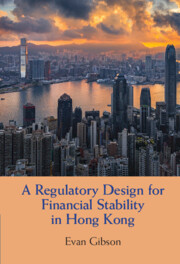Book contents
- A Regulatory Design for Financial Stability in Hong Kong
- A Regulatory Design for Financial Stability in Hong Kong
- Copyright page
- Contents
- Acknowledgments
- Abbreviations
- 1 Introduction
- Part I A Financial History of Hong Kong
- Part II The Regulatory Models of Financial Supervision
- Part III Contemporary Regulatory and Supervisory Approaches
- Part IV Banking Regulation and Supervision in Hong Kong
- Part V Resolution Regimes and Crisis Management Mechanisms
- Part VI Financial Market Integration with the Mainland
- 13 China’s International Financial Centre, Renminbi Infrastructure, and Cross-Boundary RegTech
- 14 Dollar Sanctions, the Digital Yuan, and Regulating FinTech
- 15 Conclusion
- Index
13 - China’s International Financial Centre, Renminbi Infrastructure, and Cross-Boundary RegTech
from Part VI - Financial Market Integration with the Mainland
Published online by Cambridge University Press: 25 August 2022
- A Regulatory Design for Financial Stability in Hong Kong
- A Regulatory Design for Financial Stability in Hong Kong
- Copyright page
- Contents
- Acknowledgments
- Abbreviations
- 1 Introduction
- Part I A Financial History of Hong Kong
- Part II The Regulatory Models of Financial Supervision
- Part III Contemporary Regulatory and Supervisory Approaches
- Part IV Banking Regulation and Supervision in Hong Kong
- Part V Resolution Regimes and Crisis Management Mechanisms
- Part VI Financial Market Integration with the Mainland
- 13 China’s International Financial Centre, Renminbi Infrastructure, and Cross-Boundary RegTech
- 14 Dollar Sanctions, the Digital Yuan, and Regulating FinTech
- 15 Conclusion
- Index
Summary
Hong Kong is Mainland China’s international financial centre and capital market gateway, being home to the largest offshore renminbi hub. Cross-boundary connect schemes have significantly boosted capital flows between Hong Kong and the Mainland. Hong Kong’s role in the internationalization of the renminbi and offshore investment is supported by cross-boundary financial market infrastructure and complicated by the dual supervisory and regulatory systems in each jurisdiction. Hong Kong and the Mainland operate under the sectoral model with some key design differences. This chapter argues these differences produce cross-boundary macro-prudential and systemic supervisory underlap across the renminbi and connect scheme infrastructure. To overcome design flaws inherent to the sectoral model, both jurisdictions have created composite systemic supervisors. Cross-boundary underlap constricts these composite systemic supervisors from mitigating systemic risk outside their home jurisdiction. Moreover, Hong Kong and the Mainland have begun adopting regulatory technology to enhance financial market supervision. However, technology does not change the functionality of financial market infrastructure nor the cross-boundary supervisory functions. Technology risks are introduced that expand rather than change the supervisory roles. Cross-boundary supervisors should not reduce risk management requirements merely because technology automates compliance requirements or supposedly eliminates orthodox financial risks.
Keywords
- Type
- Chapter
- Information
- A Regulatory Design for Financial Stability in Hong Kong , pp. 263 - 286Publisher: Cambridge University PressPrint publication year: 2022

